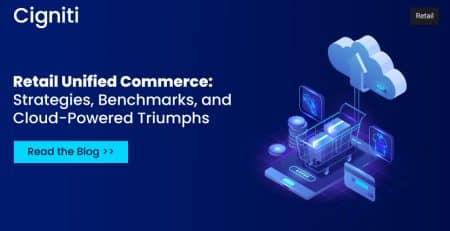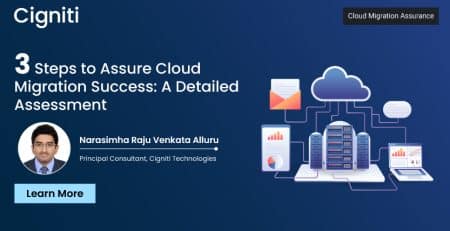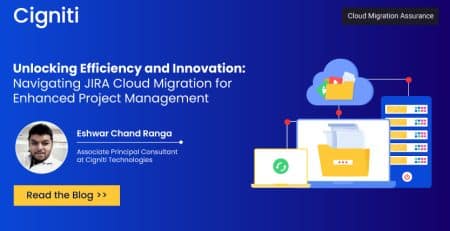Best Practices and Benefits of Data Migration in Oracle Cloud
Data migration refers to the process of moving data from one location to another. In the context of Oracle Cloud, data is transferred from on-premises systems or other cloud platforms to Oracle’s cloud infrastructure. Whether you’re migrating databases, applications, or entire systems, a complete approach is critical to a successful migration.
Challenges Involved in the Data Migration Process of Oracle Cloud Infrastructure
Here are a few obstacles and difficulties noticed and should be aware of during the migration process.
Data Volume and Complexity: Large volumes of data and complex data structures can be challenging during migration.
Data Quality Assurance: Ensure data integrity and quality are maintained throughout migration.
Compatibility Issues: Identifying compatibility issues between different databases or structures.
Downtime and Disruptions: Reduced downtime and interruptions to ongoing operations are essential for business continuity.
Following some best practices for Data Migration in Oracle Cloud is vital to overcome these challenges.
Best Practices for Data Migration in Oracle Cloud
Comprehensive Planning: Identify the data’s structure, dependencies, and scope to be migrated.
Data Cleansing and Preparation: Cleanse and manage the data before migration by eliminating redundancies, resolving irregularities, and enhancing the data for the target environment.
Choose the Right Migration Method: Oracle Cloud offers various migration methods, including lift-and-shift, database, and application migration. Select the method that best suits your data and business requirements.
Use Automation Tools: Leverage automation tools and scripts to streamline migration. Oracle provides tools like Data Pump, GoldenGate, and Data Guard for efficient data transfer.
Testing and Validation: Conduct thorough testing and validation post-migration to ensure data accuracy, completeness, and integrity. This step helps identify and address any issues before fully transitioning operations to the cloud.
Security and Compliance: Ensure adherence to security protocols and compliance standards throughout migration. Implement encryption and access controls to protect sensitive data.
Monitoring and Optimization: Continuously monitor data migration in Oracle Cloud, identifying areas for optimization and performance enhancements.
Implementing these best practices is mandatory in all types of migration using different tools.
Different Tools Used for Migration
Oracle Data Pump: This utility unloads and loads data and metadata. You can use the Data Pump Export and Import utilities to move data from on-premises databases to OCI or between OCI databases.
GoldenGate: Oracle GoldenGate is a premier replication tool for Oracle databases for data integration, high availability, and online migrations. It enables continuous data capture, transformation, and delivery across different platforms.
RMAN (Recovery Manager): RMAN can also be used for migrating data, especially when dealing with backup sets and restoring them to an Oracle Cloud Infrastructure database.
Transportable Tablespace: This method involves moving tablespaces between databases. This approach can move data across platforms with different endian formats.
SQL Developer: Oracle SQL Developer provides a user-friendly interface for migrating data. It allows you to migrate data from different sources (including non-Oracle databases) to Oracle databases on OCI.
Database Link: Database links can be used to access and manipulate remote data in another database. This method can also move data between databases accessible from OCI.
External Tables and Data Pump: Using external tables in the Oracle Database, you can query data in flat files and then use Data Pump to load that data into an Oracle Cloud database.
Oracle Cloud Infrastructure CLI and APIs: Oracle provides command-line tools and APIs that allow you to automate various aspects of migration, manage resources, and perform tasks in the Oracle Cloud environment.
Third-party migration tools: Several third-party tools support Oracle database migration to the cloud. Tools like AWS Database Migration Service, Striim, and others can help migrate Oracle databases to Oracle Cloud Infrastructure.
Migrating the data from any on-premises or other cloud environments to Oracle Cloud will have several benefits, depending on the specific needs and goals of the organization.
Benefits of Data Migration from On-Prem or Cloud Environments to Oracle Cloud
Here are some common advantages associated with data migration to Oracle Cloud.
Cost Saving: Oracle Cloud provides a pay-as-you-go pricing model, which can lead to cost savings for organizations.
Performance: Oracle Cloud provides a high-performance infrastructure with advanced computing capabilities, enabling better system performance.
Scalability: Oracle Cloud provides accessible infrastructure and services, enabling organizations to quickly scale their resources up or down based on demand.
Security: Oracle Cloud may enhance an organization’s overall security by utilizing Oracle’s secure security features and practices.
Automation: Oracle Cloud offers a range of automation and management tools. Automated provisioning and monitoring can help in reducing the need for manual intervention.
Innovation: Oracle Cloud provides a platform for innovation utilizing advanced technologies such as artificial intelligence, machine learning, and analytics.
Why Cigniti
Testing is a crucial aspect of any migration, and Cigniti has firmly established its prominence in testing services. We ensure a successful migration process and maintain data integrity, and the new environment performs as per the expectation of the business requirement.
The testing scope for Oracle Cloud Migration includes the following areas:
Functional Testing: Ensuring the Oracle applications (e.g., Oracle E-Business Suite, Oracle Database) perform as expected in the Oracle Cloud environment. Also, verify the business process is functioning correctly after the migration.
Data Migration Testing: Ensuring the data is accurately migrated from the on-premises environment to Oracle Cloud without any loss.
Performance Testing: This will cover the system and database performance to confirm that they meet the performance benchmarks set during the planning phase.
Security Testing: This covers the access controls and data encryption per the security requirements.
Integration Testing: This will cover the testing between Oracle and its integrated applications.
User Acceptance Testing (UAT): This will involve testing with the end users to confirm that it meets their expectations.
Backup and Recovery Testing: This test will cover the confirmation that the backup procedures are in control and the recovery process to ensure the data is restored in case of any failure.
Oracle Cloud Infrastructure Services is helpful for businesses because it has excellent security and helps manage data well. More and more companies are seeing how important it is to use cloud technology, and moving their data to Oracle Cloud is an intelligent move for growing and staying up-to-date. This change is not just about using new tech but about becoming faster and stronger in a world where digital things are constantly changing.
Need help? Contact our Oracle Cloud Migration Assurance experts to learn more about the best practices and benefits of Data Migration in Oracle Cloud.





Leave a Reply